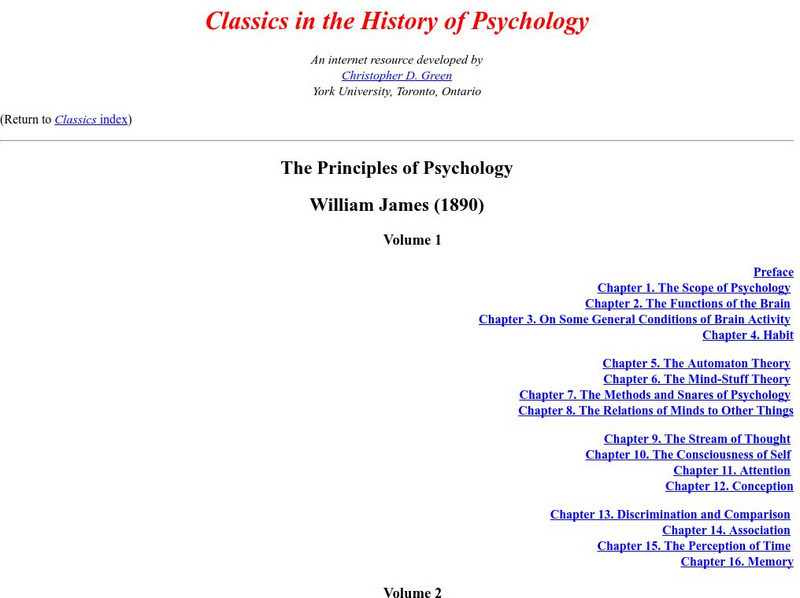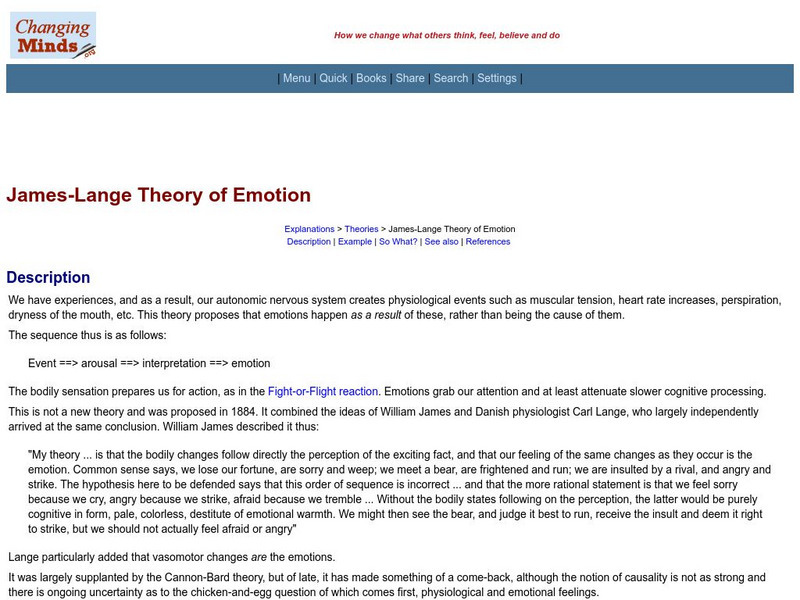Shippensburg University
Shippensburg University: Wilhelm Wundt and William James
Compares and contrasts the psychologist Wilhelm Wundt (1832-1920 CE) and his theory of structuralism with the psychologist Willam James (1842-1910 CE) and his theory of functionalism.
York University
Classics in the History of Psychology: Principles of Psychology by William James
Complete volumes of the two volumes of this work are available for study.
Emory University
Emory University: Psychology Defined William James
This resource starts with the psychologist William James (1842-1910 CE) definition of Psychology, and then goes into greater detail about what the field should study.
Emory University
Emory University: William James
A complete site on William James. Contains an abundance of links for information on William James including links to biographies on his life, links to some of his works, reviews and criticisms, and much, much more!
Other
The Varieties of Religious Experience by Wm. James Etext
The intersection of psychology and religion is explored by this classic book by William James.
Philosophy Pages
Philosophy Pages: William James (1842 1910)
This webpage gives good information about the life, times, and work of the psychologist William James (1842-1910 CE) with good references and links.
Independence Hall Association
U.s. History: Roots of the Movement
Progressivism got a push from the Populist movement, a reaction to the forgettable presidents and laissez-faire government in the Gilded Age. Find a listing of authors who wrote about progressive ideas, and see what influence populism...
Other
Changing minds.org: James Lange Theory of Emotion
An easy-to-read description of the James-Lange Theory of Emotion along with a quote from William James, co-creator of the theory, who describes the theory in his own words.









